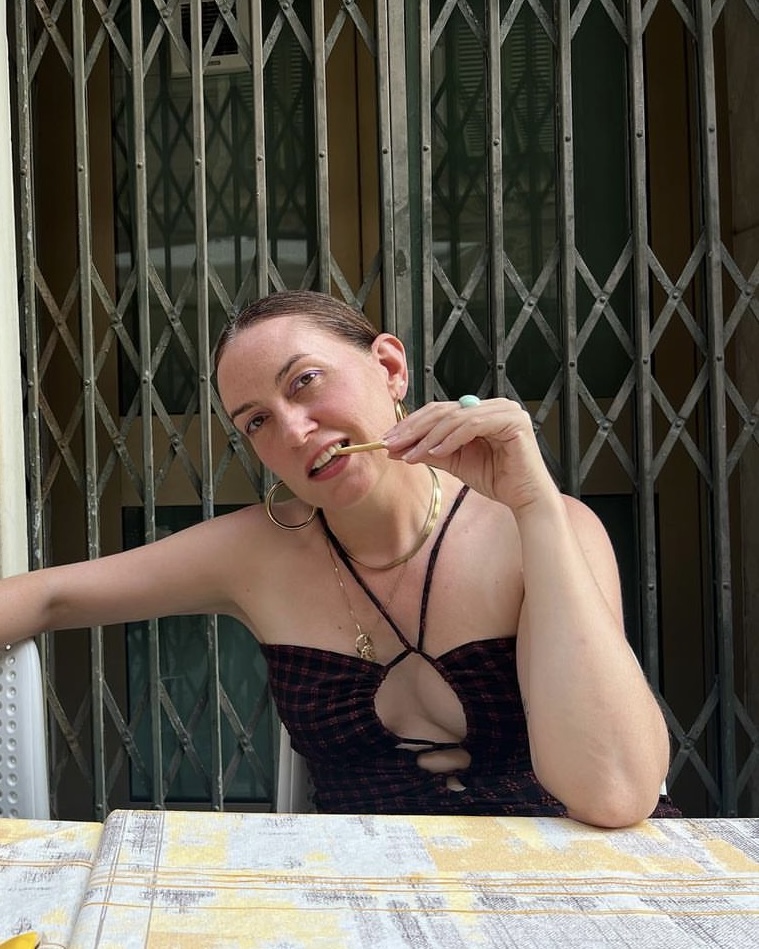Are You Allergic to Your Beauty Products?
Sensitive skin? It can probably be traced back to one of these nine culprit ingredients. PLUS: Follow these 5 rules for taking care of senstive skin, and check out MC's favorite soothing and all-natural products.


"I would say that at least 50 percent of women think they have sensitive skin," says dermatologist Dr. David Bank. "They have a hard time finding products that won't cause a reaction." That reaction, called contact dermatitis, falls into two categories: allergic and irritant. Allergic indicates that the immune system is displeased, while irritant reactions stop at the surface. It's something Lynne Greene, Clinique's global president, became all too familiar with on a recent trip to Asia. "I went to Singapore, which is one climate; Japan, which is another; and finally Shanghai, which has a lot of pollution," she says. "By the time I boarded the plane home, my skin was tremendously red and reactive." But while the detrimental effects of environmental aggressors may be beyond our control, what we put on our skin can be monitored, says Greene. And a number of reactions, both allergic and irritant, can be traced back to one of these culprit ingredients:
PHTHALATES: A plasticizing ingredient commonly listed as DBP or di-n-butyl phthalate, it is used most often in the beauty world to give nail polishes increased pliability. Considered to be a potential carcinogen and possible cause of birth defects, allergic rashes and eczema, they are already banned in Europe. When shopping for lacquers, look for phthalate-free formulas. Neither Zoya nor Spa Ritual has ever used the ingredient in its lines, while Essie, OPI, and Sally Hansen altered their formulations in recent years to get rid of it.
SHEA BUTTER: It may seem completely harmless, but anyone with a nut allergy could find themselves with a heightened sensitivity to it. "I have seen reactions among those with nut allergies to both shea and cocoa butter," says Dr. Ellen Marmur, author of the new book Simple Skin Beauty. "Even organic or natural ingredients can cause allergic reactions."
TRICLOSAN: Flu season and the ongoing swine flu epidemic have made hand-washing a frequent ritual, and in some cases, it's the soap that causes the itchy rashes creeping up on palms and fingertips. If your hands are inflamed, steer clear of any soaps or sanitizers with this antibacterial agent.
MC RECOMMENDS: Check out our favorite soothing and all-natural products.
BALSAM OF PERU: Fragrance is the number-one cause of allergic contact dermatitis, and Balsam of Peru, a resin that is actually a conglomeration of scents, is often responsible. Because of its phototoxic ingredients, when the skin is exposed to sunlight, brown or reddish streaks called berloque dermatitis may occur wherever the scented product or perfume was applied—dermatologists report many incidents of berloque behind the ears. The key is to look for products that are totally fragrance-free — which is not the same as unscented. "Unscented means that a product can contain a masking fragrance to camouflage its pungent, unpleasant odor," says Bank. "Fragrance-free means truly no fragrances."
FORMALDEHYDE: While most beauty products won't include this ultra-common makeup, skin, and haircare preservative on the ingredient list, many will have a formaldehyde-releasing agent like imidazolidinyl urea or quaternium 15, which can be equally reactive. Therefore, those who experience an allergy or irritation to formaldehyde actually have a list of names to be on the lookout for. Nowadays, two of the most frequent places where contact may occur are the nail and hair salon. "The most common cause of eyelid dermatitis is the formaldehyde in nail polish," says dermatologist Dr. Marsha Gordon. "After you polish your nails, there is a day or two when the finish is not rock hard, and that's when formaldehyde may be released. Your hands may not show redness because that skin is tough, but when you touch your eyes while washing or moisturizing, you can end up with dermatitis there."
Get exclusive access to fashion and beauty trends, hot-off-the-press celebrity news, and more.
PARABENS: They are the darlings of preservatives among mass manufacturers since they're cheap and stable. It can be downright difficult to find products that don't contain parabens like methyl, propyl, and benzyl hydroxybenzoate. Those who experience redness or a rash can avoid them entirely by seeking out lines such as Aubrey Organics, Burt's Bees, Dr. Hauschka, and Weleda, whose formulations are all paraben-free.
ACIDS: While the majority of acids — azelaic, alpha hydroxy, benzoic, lactic, sorbic — are tolerable in modest doses, cinnamic can pose a problem. A tartar-fighting agent in toothpaste, it can be the reason for itchy eruptions on the lips and around the mouth. Look for toothpaste without cinnamic acid (like Tom's of Maine), or if you're attached to a brand that has it, dermatologist Dr. Dennis Gross recommends applying Vaseline around the mouth and chin before brushing to form a barrier.
PPD: Paraphenylenediamine (PPD) is found in most permanent hair dyes. Those who are allergic will likely develop a rash not on the scalp but around the hairline on the forehead and neck and behind the ears. According to Gross, allergy to PPD seems to increase with age. Avoid contact by requesting PPD-free dyes or opting for henna and color rinses that don't contain the irritant.
RETINOIDS: Most dermatologists will concur that despite a laundry list of antiaging and acne-fighting benefits, retinoids are also a classic irritant. "They make your skin more sensitive to the sun in the summer and more prone to dryness in the winter," says Gross. "What really matters is the net concentration that you apply to your skin. Using something weaker more often is better than something stronger that can only be tolerated a few times per week." Marmur also has a little retinoid magic trick: "If you want your antiaging without the red, raw skin, put on your retinoids for 15 minutes at night, then wash it off with a mild cleanser. I call it 'short-contact antiaging.'"

Fiorella Valdesolo is a contributing editor at the Wall Street Journal Magazine, and has written for New York, Vogue, Town & Country, Allure, Time, National Geographic, CR Fashion Book and Oprah. She was the cofounder and Editor-in-Chief of the late James Beard Award–winning food magazine Gather Journal. She lives in Brooklyn with her partner Nate, their six-year-old daughter Aluna, and their dog Rosie.